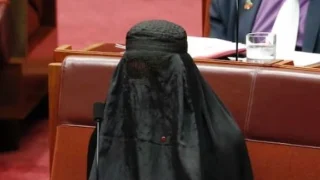
Speech given by CIS Policy Analyst Trisha Jha to the NSW Liberal Party’s Rural and Regional Lunch on Saturday March 5, 2015.
Thank you to Tobias and Hollie for inviting me to address you all this afternoon.
I’d like to give you a bit of an introduction to the organisation I work for. The Centre for Independent Studies is a non-partisan think tank funded entirely by donations. We believe in individual liberty, free enterprise, limited government and the rule of law.
Our research and commentary reflects these principles. Much of our work concerns areas of policy where governments are too involved, for little or no real benefit.
That’s why childcare has become one of my main areas of research. Government is substantially involved in the functioning of the sector and it represents a growing area of government expenditure. The federal government is spending about $8 billion this financial year on the Child Care Benefit, the Child Care Rebate, and other smaller programs that subsidise fees and support the child care system. The cost is projected to rise to $11 billion in 2018-19, meaning the program will grow by 41% over just three years. This is partly the result of the government’s policy to increase childcare spending as part of the Jobs for Families package.
I’m going to start off by explaining how childcare is regulated and then I’ll talk about whether the evidence shows these regulations are beneficial. To finish I’ll explore a few ways childcare and family payments can be improved.
* * *
But first, all of this had to start somewhere. The federal government initially became involved in childcare in the dying days of the McMahon government. The Child Care Act of 1972 distributed federal funding to non-profit organisations for the purpose of establishing childcare services.
During the Hawke and Keating years, childcare took off as a mainstream concern. Subsidies for childcare fees were introduced by the Hawke government. They were available to families who used private and for-profit childcare as well as those who used non-profit and community care.
Minimum standards for childcare centres were regulated at the state level, but the Keating government also introduced federal quality accreditation that sat on top of these minimum standards. Accreditation was seen as a way to ensure that taxpayers got value for money even though childcare was still regarded as a workforce participation measure.
I looked at the regulatory system we have today, called the National Quality Framework, in a report called Regulating for Quality in Childcare: The Evidence Base. The NQF is a federal-state compact that mandates new minimum standards in childcare.
The main areas of regulation that have been tightened are staff-to-child ratios, and staff qualifications. Under the NQF changes, more staff are needed to look after the same number of children, and these staff also need to be more qualified — with everyone having a Certificate III or Diploma-level qualification.
The NQF began its rollout in 2012 and the last phase of the regulations was implemented on January 1 of this year. It was originally Labor policy, but it has not changed significantly since the Coalition took office in 2013.
Even home-based care in the form of Family Day Care has been included in the NQF. The number of children under school age family day carers can look after has been reduced. Where parental judgment was once considered enough, now carers require a Certificate III qualification. This is even though many parents choose family day care because of its similarity to their child’s own home environment.
The requirement for qualifications also represents a barrier to employment for parents of young children who nevertheless still need to earn an income. This is something that’s close to me personally: my own mother worked in family day care in the early 90s when I was very young, and unemployment was in the double digits in the aftermath of the recession we had to have. Her overseas qualifications in education weren’t recognised, but it didn’t matter. At the time, it seemed like common sense that someone who raised their own kids didn’t require a piece of paper to look after someone else’s.
This particular regulation says parents are incapable of judging whether one person is suitable to look after their child. Instead, bureaucrats need to do it for them by deciding who can and can’t operate family day care in the first place.
This is the logic that underlies these regulations: government knows best. But as I’ll explore in a moment, it turns out the bureaucrats have it wrong.
* * *
Because staff costs are one of the biggest single costs for any organisation, it’s not hard to see how the NQF requirements have driven increases in fees. The government modelled the changes at the time with some very generous assumptions and showed cost increases would be small. But since then, government expenditure on childcare has skyrocketed — and so too has the pressure on family budgets.
To explain why policy has gone down this path, we have to go back to the 1990s. For the past few decades, there has been a growing consensus based on neuroscientific studies that the early years are crucial for healthy child development. In turn, this has driven a shift in the debate about the purpose of childcare. Now it’s not just about parents working, it’s about ensuring all kids can access high-quality childcare that aids their development.
The work of Nobel laureate James Heckman on the economics of investing in early childhood has been used to justify large public spending programs on childcare. Heckman’s work allegedly promises returns for governments that take the shape of everything from improvements in school achievement to reductions in crime.
The stronger regulations, and the costs attached to them, are justified on the basis that they will lead to better outcomes for children: improving their cognitive skills, their behaviour and social skills, and their emotional wellbeing. Early childhood advocates and vested interests have made it seem like a common sense equation: more regulation leads to better quality which leads to better outcomes for kids, meaning this spending generates savings in the long run.
It’s this “common-sense” claim that my research has sought to question.
What I found in my report is that the evidence does support the idea that crucial foundations for children’s healthy development are laid in the early years. But more importantly, the evidence shows the deficiencies in child development that would necessitate a public policy response are only a significant factor for children who are disadvantaged. ‘Disadvantage’ here refers to some combination of low income, welfare dependency, unstable home life, single parenting, disability or learning difficulties, and Indigenous status. These are the children who research shows benefit the most from interventions in early childhood.
But our childcare system is not an early childhood intervention. It’s a tool designed to help parents earn income to support their kids.
Nevertheless, early childhood advocates routinely take findings from tightly-targeted intervention programs entirely out of context, and say that these studies prove that spending on ordinary childcare for every child delivers returns. You may have heard it said by commentators that a dollar spent in early childhood creates a return of seven dollars in adulthood. It’s technically true, but it can only ever be useful for a small subset of the population.
The average is different. The average Australian family isn’t deficient, and nor are their children. The idea that spending all this extra money through stricter regulations is worthwhile because it’ll reduce spending in the long run is nonsense.
* * *
A related argument is that the stricter regulations in the National Quality Framework will give us higher-quality childcare, which will benefit all children who attend.
In terms of good public policy, whether costly staffing requirements should be implemented has to be based on evidence that they have a positive and significant impact on child outcomes. There should be strong evidence that the beneficial aspects of the regulation outweigh the costs.
So — what does the evidence say?
The Australian studies I reviewed find only small positive effects of lower staff-to-child ratios on social, emotional and behavioural outcomes, and no effects on cognitive outcomes. Overseas studies find no effects, or effects only for younger children.
As for higher staff qualifications, the Australian studies mostly find they have no effect on child outcomes. Only one Australian study finds improved behavioural outcomes for older children. Overseas studies mostly find no effects on child outcomes, with one exception which finds improvement in children’s academic achievement.
Based on my review of the available evidence, I am deeply sceptical the mandated changes to staffing requirements in the NQF will generate improvements in child outcomes. At the very least, I am certain that they do not represent value for money.
* * *
This brings us back to the government’s proposed childcare reforms. At the time I conducted this research in 2014, federal spending on childcare was $7 billion per year. Before the government decides to lock in huge increases in spending, they need to be absolutely certain that spending is the best way to make childcare more affordable and accessible for parents. Unfortunately, none of the federal ministers who have had responsibility for childcare have thus far attempted to address the problems caused by excessive regulation.
Even so, the government’s Jobs for Families proposal makes some welcome changes to the system. Combining several different childcare payments into one subsidy, calculated as a percentage of fees, is a much-needed simplification of existing policy. Linking eligibility for subsidies more closely to the number of hours parents actually work, is also necessary.
The other positive aspect of the government’s policy is that it includes a pilot program for subsidies for nannies, available to a limited number of families whose work or living situations make ordinary childcare infeasible. This includes rural families. For families in rural areas, the fact that there may only be one viable childcare service can mean parents either pay exorbitant fees, or miss out entirely.
The nanny pilot program will finish at the end of 2017, at which point there will be an independent evaluation to see whether the program is worth expanding. The way it is currently designed means the program is of most benefit to large families where children are relatively close in age. These families face the highest costs for formal childcare places, as several children will be moving through the system at once.
While this type of family does exist, they are in a fairly small minority. And there are easier ways to help rural families. Childcare services in rural and regional areas have already ceased to operate due to the costs of the NQF. If the government is serious about expanding access to care options for the majority of rural and regional families, they have to recognise that regulations are a barrier to providing these much-needed services.
* * *
If there is a common theme in the government’s reforms, it’s tying childcare entitlement to workforce participation. It’s true there is a much stronger case for childcare subsidies designed to support workforce participation, than there is for other goals.
But it’s not the only goal that matters in family policy. It’s also important that governments don’t try to socially engineer family structure and family choices about work and childcare, by providing excessive benefits to one type of family. More spending on childcare services inevitably widens the gap between how policy treats dual-income families, and how policy treats families where one parent leaves the workforce to provide care for their kids.
The tax burden on a family where one spouse earns $70,000 and the other provides home-based services, is much higher than the tax burden on a family where two people earn an income of $35,000 each. The first family can access Family Tax Benefit Part B, a small cash payment designed for families with one income earner. It’s worth less than what other families can claim in childcare subsidies. The second family has two tax-free thresholds as well as access to generous childcare subsidies.
Dual-income families are relatively well looked after by the system, with their lower tax burden and access to childcare subsidies and paid parental leave. But single-income couple families are virtually forgotten. I am not advocating turning the clock back on policy or saying policy needs to favour sole breadwinner families. I am merely saying that our system should be more neutral.
* * *
There are ways the system could be improved. Our family payments system, including family tax benefits, paid parental leave and childcare, costs around $30 billion annually.
Firstly, expenditure on childcare needs to be cut in real terms, or at least not increased. The only way that can happen is if the sector is deregulated.
There are middle-of-the-ground ways to do this. The evidence suggests that there is a stronger case for lower staff-to-child ratios for younger children and more qualified staff for older children. The new lower ratio for babies under the NQF is a good idea, but the staff working with these children should not need a diploma. The opposite is true for older children: the evidence of benefits from lower ratios is not strong, but the evidence for more highly-qualified staff is comparatively better.
State and local government planning laws play a role in limiting childcare access. The Productivity Commission has outlined how local councils mandate additional requirements for childcare centres. Local council control over planning means councils decide where new centres are built, and how many places they can offer. State governments should examine the powers local councils have in this area with a view to limiting them.
Though deregulation is necessary, parents should also have access to information about the quality of childcare centres. Looser regulation that’s nevertheless combined with stronger information can help parents make educated and informed choices about what they need in a childcare service. The government already collects quality rating information as part of the NQF so it’s not a huge additional impost.
These changes can make childcare more affordable, but the complicated mix of income taxes and transfer payments for families must also be addressed. Family Tax Benefit Part B is a rather poor way of delivering assistance to single-income families. Because it’s an income-tested cash payment, most of the benefits are snaffled up by low-income families. These families already benefit the most from other payments and services.
A better way to recognise the single-income couple family is through a tax deduction that lifts the tax-free threshold. A similar proposal was included in the National Party’s submission to the Tax White Paper process.
The key to this policy is that a household would actually have to pay income tax in order to benefit. If there were a cash payment for families who don’t pay income tax, it would just re-create the existing system.
Currently, families can receive multiple income-tested payments, which then reduce with additional income earned in a way that creates pretty substantial disincentives to work. This problem of effective marginal tax rates has been identified again and again by several government reviews and reports, but nothing is being done about it. It is one of the key barriers to workforce participation, and one of the main reasons the Productivity Commission thinks that extra spending on childcare can only have a small effect on participation rates.
It’s also difficult to spin childcare spending as a productivity booster when nothing is being done to increase the number of childcare places. Simply finding a place is difficult for many families, and policymakers don’t want to recognise the role that regulation plays. All the subsidies in the world can’t change a fundamental problem of demand exceeding supply.
The childcare system is complicated. All three levels of government have some sort of role in it, and federal expenditure is growing rapidly at a time when the budget outlook is deteriorating. Reforming childcare in the way I have described is not an easy sell. Not only is there a chorus of vested interests queueing up to criticise even the smallest of changes, parents simply won’t have a bar of it.
But this is exactly the type of reform that is true to the ethos of the Liberal Party. Defending lean government means standing up to vested interests in the childcare sector. It means sticking up for hardworking taxpayers who are footing the bill. It also means recognising that individuals have lost out, whether it’s because they can’t find a childcare place or they’re no longer considered qualified to look after children. For the Prime Minister and Treasurer to achieve their goal of repairing the budget and restoring the nation’s fiscal footing, these policies must be reformed.
I hope you will all give some thought to advocating change.










